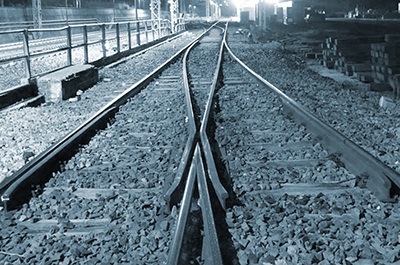
The ultimate goal of the project “Mixed Traffic” is to create the conditions for both high-speed trains and conventional railway vehicles – meaning the ones with a maximum speed limit of 200 km/h – to travel on the same rail line. A group of aerodynamic researchers of the Department of Mechanical Engineering is currently conducting this research for the Joint Research Centre (JRC).
For over ten years, the JRC working group has allowed railway experts from companies and universities to carry out an in-depth technical analysis of relevant projects aimed at improving the security and the performance of the Italian railways. Rete Ferroviaria Italiana (RFI) and Trenitalia, in collaboration with the manufacturing company Hitachi Rail Italy and the certificate authority Italcertifer, decided to co-fund a project to evaluate the effects of overpressure when two trains come across, especially in tunnels, and publish the results later on.
This is a crucial aspect when it comes to aerodynamic loads on trains and to guarantee passengers’ safety and comfort, in terms of the maximum pressure variation that the human ear can tolerate before it causes injuries or any other ear problems.
High-speed trains are designed to be sealed, that is isolated from the external environment in terms of temperature and pressure, while conventional trains are not. To pass the homologation test, a high-speed train must meet some specific requirements, which prevent the effects of overpressure so that these trains can run on high-speed rail (HSR) lines at the same time as other high-speed trains. Conventional trains must not meet these requirements because it creates no problem when two “slow” trains cross - maybe passengers can feel a little discomfort in the ears due to a pressure variation passing through a tunnel. Instead, high-speed trains must do. The overpressure caused by two high-speed trains crossing is highly affected by their speed and their aerodynamic characteristics.
It explains why measuring the aerodynamic features of the most common conventional Italian trains is among is on the to-do list of JRC. In these days an experimental campaign carried out through a fixed installation testing of pressure and speed sensors started for this very purpose. The sensors will detect and measure the amount of air moved when the train passes through a tunnel for about one km. The sensors will be working for a month to register the trains travelling on that line. Other than ordinary cabled sensors, during this experimental campaign will be tested a wireless sensor node prototype that runs on batteries. This prototype has been designed to continuously measure air pressure for a few days and register on-site all acquired data and developed ad hoc for this very installation by a group of researchers of the Department of Mechanical Engineering.
All acquired experimental data will be processed and used to develop numerical simulations, which will allow the evaluation of all critical working conditions and provide the tools to handle mixed traffic. Eventually, this will also improve the high-speed Italian railway capacity, which will have a direct impact on the service and the offer for commuters.
